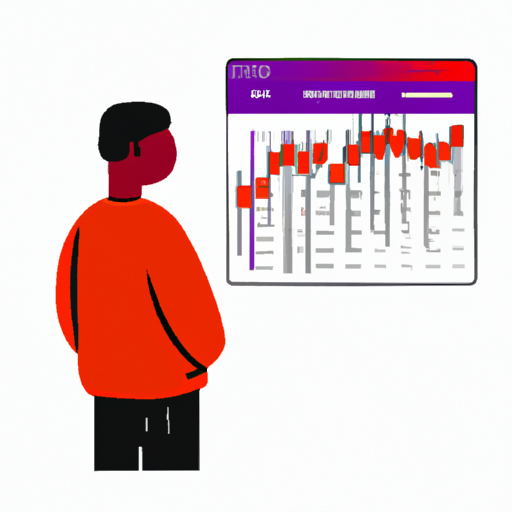I. Introduction: The Power of Trading Signals
II. Understanding Different Types of Trading Signals
III. Top Factors to Consider when Choosing Trading Signals
IV. Best Trading Signal Providers of 2023

The Power of Trading Signals
Trading signals have become an indispensable tool for both seasoned traders and beginners alike. These signals, generated by expert analysts and algorithms, provide valuable insights into the financial markets and help traders make informed decisions. Whether you’re interested in stocks, forex, or cryptocurrencies, trading signals can give you a significant edge in the market.
So, what exactly are trading signals? In simple terms, they are indicators or triggers that suggest when to buy or sell a particular asset. These signals can be based on various factors such as technical analysis, fundamental analysis, or a combination of both. By following these signals, traders can potentially maximize their profits and minimize their risks.
Now, let’s dive into the different types of trading signals:
1. Technical Analysis Signals
Technical analysis signals are derived from the study of historical price and volume data. Traders who rely on technical analysis use various tools and indicators to identify patterns, trends, and potential entry or exit points. Some popular technical analysis indicators include moving averages, MACD, RSI, and Bollinger Bands.
When considering technical analysis signals, it’s important to understand that past performance is not a guarantee of future results. However, these signals can provide valuable insights into market sentiment and help traders anticipate potential price movements.
2. Fundamental Analysis Signals
Fundamental analysis signals, on the other hand, focus on the underlying factors that can influence an asset’s value. This type of analysis involves examining economic indicators, company financials, news events, and other relevant factors that can impact the market. By analyzing these fundamentals, traders can make informed decisions about whether to buy, sell, or hold a particular asset.
It’s worth noting that fundamental analysis signals are typically used for long-term investments rather than short-term trading. This approach requires patience and a deep understanding of the asset’s fundamentals.
3. Social Sentiment Signals
Social sentiment signals have gained popularity in recent years, especially in the world of cryptocurrencies. These signals analyze social media platforms, news articles, and online forums to gauge the overall sentiment towards a particular asset. By monitoring social sentiment, traders can get a sense of market trends and potential shifts in investor sentiment.
When choosing trading signals, there are several factors to consider:
- Accuracy: Look for signal providers with a proven track record of accuracy. It’s important to choose signals that have a high probability of success.
- Reliability: Ensure that the signal provider delivers signals in a timely manner and has a robust infrastructure to support their service.
- Transparency: Opt for signal providers who are transparent about their methodology and provide detailed performance reports.
- Customizability: Different traders have different strategies and risk tolerance levels. Look for signal providers that allow customization to suit your individual needs.
Now that you have a better understanding of trading signals and what to consider when choosing them, you might be wondering which signal providers are the best in 2022. Stay tuned for our upcoming article where we’ll reveal the top trading signal providers of the year.
In the meantime, if you’re eager to learn more about trading signals and enhance your trading skills, check out this Coin Bureau for valuable insights and resources.
Understanding Different Types of Trading Signals
So, you’ve decided to dive into the exciting world of trading signals. Good for you! But before you start splurging your hard-earned money on the first signal that catches your eye, it’s important to understand the different types of trading signals out there. Not all signals are created equal, my friend.
1. Technical Analysis Signals:
These signals are like the Sherlock Holmes of the trading world. They use historical price and volume data to predict future market movements. Technical analysts believe that all the information you need to make smart trading decisions is right there in the charts. They look for patterns, trends, and indicators to identify buy and sell opportunities. If you’re a fan of numbers and charts, this type of signal might be right up your alley.
2. Fundamental Analysis Signals:
While technical analysts are busy deciphering charts, fundamental analysts are digging into the nitty-gritty of a company’s financials. They analyze factors like earnings reports, news releases, and economic indicators to determine the true value of a stock. If you’re interested in the big picture and how global events can impact the market, fundamental analysis signals might be more your style.
3. Sentiment Analysis Signals:
Now, this type of signal takes a slightly different approach. Instead of focusing on numbers or financial statements, sentiment analysis signals look at the emotions and opinions of traders. They monitor social media, news articles, and even chat rooms to gauge market sentiment. If you believe in the wisdom of the crowd, these signals might be right up your alley.
4. Automated Signals:
Imagine having a robot assistant that does all the hard work for you. Well, that’s exactly what automated signals offer. These signals use complex algorithms and mathematical models to analyze market data and generate trading recommendations. They can be a great option if you’re looking for a hands-off approach to trading.
5. Copy Trading Signals:
Are you a newbie in the trading world? Don’t worry, we’ve got you covered. Copy trading signals allow you to automatically copy the trades of successful traders. It’s like having a mentor who does all the heavy lifting for you. Just sit back, relax, and let the experts do their thing.
Now that you know the different types of trading signals, it’s time to choose the one that suits your trading style and goals. Remember, not all signals are created equal, so do your research and choose wisely. Happy trading!
III. Top Factors to Consider when Choosing Trading Signals
When it comes to choosing trading signals, there are several factors you should consider to ensure you’re making the best possible decision. Here are the top factors to keep in mind:
- Accuracy: The most important factor to consider is the accuracy of the trading signals. After all, you want signals that have a proven track record of success. Look for providers that can provide you with historical data and performance metrics to back up their claims. Don’t be swayed by flashy marketing tactics; instead, focus on hard evidence of their accuracy.
- Transparency: It’s crucial to choose a trading signal provider that is transparent about their methodology and strategy. You should have a clear understanding of how they generate their signals and what indicators they use. Avoid providers who are secretive or unwilling to share their approach. Transparency builds trust and gives you confidence in the signals you’re receiving.
- Compatibility: Make sure the trading signals you choose are compatible with your trading platform or software. There’s no point in subscribing to signals that you can’t execute on your preferred platform. Check if the provider offers signals that are compatible with popular platforms like MetaTrader or TradingView.
- Support: A reliable trading signal provider should offer excellent customer support. You may have questions or need assistance, so it’s important to have access to a responsive support team. Look for providers that offer multiple channels of communication, such as email, live chat, or phone support.
- Risk Management: Effective risk management is crucial in trading. Look for signal providers that emphasize risk management and provide guidance on setting stop-loss orders and managing your overall risk exposure. Signals that come with risk management strategies can help protect your capital and minimize potential losses.
- Cost: While cost shouldn’t be the sole determining factor, it’s still an important consideration. Compare the pricing structures of different signal providers and assess whether the cost is justified based on their performance and the additional features they offer. Keep in mind that the cheapest option may not always be the best, so weigh the cost against the other factors mentioned here.
By considering these factors, you’ll be well-equipped to choose trading signals that align with your trading goals and preferences. Remember, it’s essential to do your due diligence and thoroughly research each provider before making a decision.
For more in-depth information on trading signals and the cryptocurrency market, check out Coin Bureau. They provide comprehensive insights, analysis, and educational resources to help you navigate the exciting world of crypto trading.
IV. Best Trading Signal Providers of 2023
So, you’ve decided to dip your toes into the exciting world of trading signals. Good for you! But with so many options out there, it can be overwhelming to choose the right provider. Don’t worry, though, because I’ve got you covered. Here are the best trading signal providers of 2023:
-
Sublime Traders
If you’re looking for the best crypto and forex signal provider, look no further than Sublime Traders. With their team of experienced traders and cutting-edge technology, they consistently deliver high-quality signals that can help you make informed trading decisions.
Sublime Traders offers a wide range of signals for various cryptocurrencies and forex pairs. Whether you’re a beginner or an experienced trader, their signals are designed to cater to different trading styles and risk appetites.
One of the things that sets Sublime Traders apart is their commitment to transparency. They provide detailed performance reports, so you can see how their signals have performed in the past. This level of transparency is crucial when choosing a signal provider, as it allows you to make an informed decision.
Another great thing about Sublime Traders is their user-friendly platform. Their signals are easy to understand and execute, even if you’re new to trading. Plus, they offer excellent customer support, so you can get help whenever you need it.
So, if you’re serious about trading and want to maximize your chances of success, give Sublime Traders a try. With their top-notch signals and dedication to customer satisfaction, they are definitely one of the best signal providers out there.
-
Signal Profits
Signal Profits is another popular trading signal provider that deserves a spot on this list. They offer signals for both crypto and forex markets, catering to traders with different preferences.
What sets Signal Profits apart is their unique trading strategy. They use a combination of technical analysis, market sentiment, and artificial intelligence to generate their signals. This multi-faceted approach can provide valuable insights and increase the accuracy of their signals.
Signal Profits also provides educational resources, including video tutorials and trading guides, to help traders improve their skills. This commitment to education is commendable, as it shows that they genuinely care about their clients’ success.
-
CoinSignals
If you’re specifically interested in crypto signals, CoinSignals is worth considering. They offer signals for a wide range of cryptocurrencies, including Bitcoin, Ethereum, and Litecoin.
CoinSignals’ signals are generated by a team of experienced traders and analysts who closely monitor the crypto market. They use a combination of technical analysis and fundamental analysis to identify profitable trading opportunities.
One of the standout features of CoinSignals is their comprehensive signal reports. Each signal comes with detailed information, including entry price, stop loss, and take profit levels. This level of detail can be extremely helpful, especially for traders who like to have a clear plan before entering a trade.
Remember, when choosing a trading signal provider, it’s essential to consider factors such as performance, transparency, user-friendliness, and customer support. The providers mentioned above excel in these areas, making them some of the best options for traders in 2023.
Now that you have the inside scoop on the best trading signal providers, it’s time to take action. Start exploring their offerings, compare their features, and choose the one that aligns with your trading goals. Happy trading!

